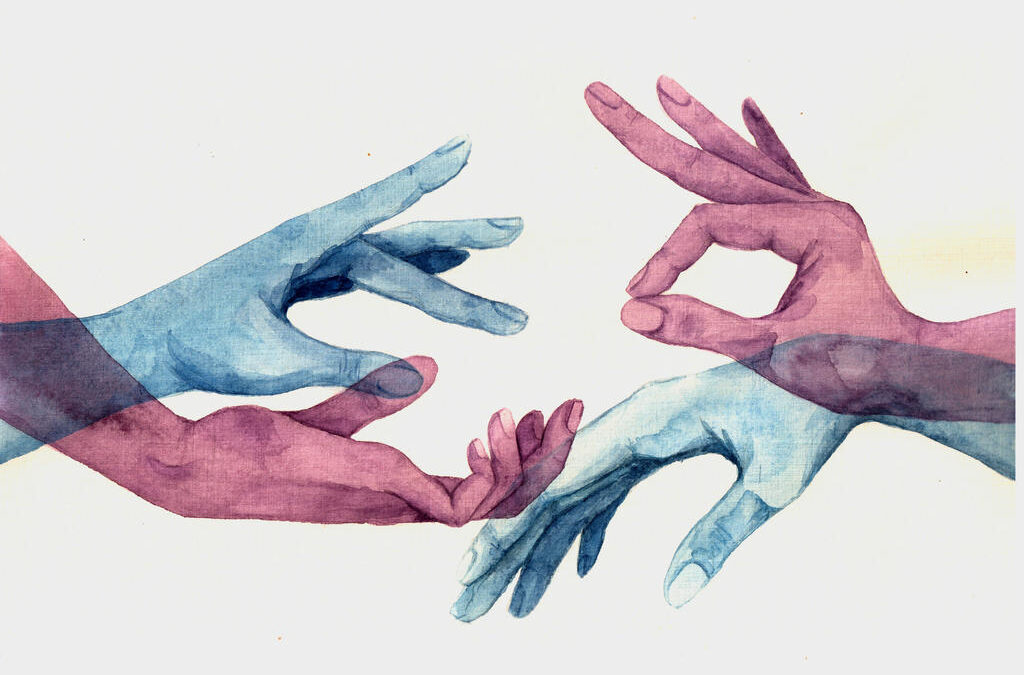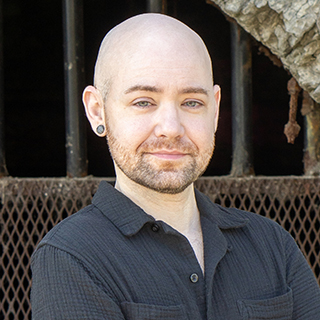Existential crisis gets at the core of what it means to be human and how we manage it all. The characters on Six Feet Under contend with the biggest questions we have: Who am I? Why am I here? What’s the point of life? Of death? Am I a good person? Do I know how to love?
These folks play out internal and outward struggles that ground the plot in existential themes of authenticity, meaning, isolation, freedom, and death anxiety. So just for fun, I’m breaking down, existential therapy wise, the main characters’ struggles. Today I’m talking about Ruth Fisher’s existential crisis of isolation.
Ruth’s crisis of isolation
The crisis of isolation speaks to an inherent separateness of human experience, what Irvin Yalom, one of the pioneers of existential psychotherapy in the U.S., called the “unbridgeable gulf between oneself and any other human being.” We are always alone with our subjective experiences of the world. But we also are social creatures designed to reach out for connection.
In its purest form, connection is a space without expectations or demands on us, in which we are seen and valued by those who care for us exactly as we are. We feel heard, we feel open and able to hear the other. We feel together, not alone. Humans are biologically wired for connection: it’s more than a want, it’s a need.
It gets more complicated when we consider that we are all working to connect within the framework of our various roles: parent, friend, romantic partner, sibling, child, and so on. We can’t escape these roles: we cast others in them, and we cast ourselves in them. They define the ways we show ourselves to others and what we want to see in them. While roles are meaningful and often necessary (fulfilling the role of a supportive, loving parent, for instance), we can be left adrift when those roles are no longer necessary or desired.
As a therapist, and in my own life, I see this challenge a lot in longer-term relationships (romantic, but also friendships): two or more people come together in desire and excitement and also because they meet certain needs. Over time, one person changes and no longer needs their partner to fulfill that role. Or one person changes and no longer wants to embody that role. Our old connection no longer fits or feels right. Is it possible to find some of that pure connection again, even as our roles change? Sometimes yes, sometimes no. And this uncertainty can be terrifying.
When social roles separate us
As Six Feet Under begins, events quickly push Ruth, the ever-suffering mom of the Fisher family, into a crisis of isolation. The show opens with her finding out her husband has just been killed in a car accident. Ruth, like many women of her generation, has been defined primarily by her roles as a mother and a wife. And now, everyone who needed her is gone: her husband is dead, and her kids are (mostly) grown.
Ruth wasn’t ready to give up those roles, but her family members and unforeseen circumstances took them away from her. And she doesn’t know what to do. She finds herself quite lonely. In her search for connection, she gets roped into a scammy self-actualization program called The Plan (a fictionalized representation of something like est or the Landmark Forum), which encourages her to reach out to the people in her life to reconnect and gives her a script to do so with.
We see her busily cleaning her house, making phone calls to her sister (who only calls her back when she needs someone to help feed her opiate addiction) and lapsed best friend. The funniest moment in this process is when she’s talking to her three children (two adults, one teen) as they sit on the stairs, and proclaims, “I want some intimacy. Give me intimacy. Won’t any of you have intimacy with me?” (season 2, episode 5)
Unsurprisingly, they laugh.
Euphemism aside, these three children (full of their own existential anxieties) are deeply uncomfortable with Ruth asking for something so far outside the rules of their existing relationships. And Ruth, on her part, doesn’t know how to go about connecting to her adult children; she’s still stuck in the mothering role. She cannot see them as they are now, full humans independent of her desires or plans for them. Nor can they see her as an aging woman, now a widow, fully human separate from her motherhood.
Why we need connection
Connection helps us validate our reality by sharing it and seeing it reflected, which in existentialism is called intersubjectivity. This is about the way we are a co-creation of internal and external perceptions of self. I can think of myself as insightful, for example, but if no one else in my life perceives me this way, am I truly insightful?
Being seen by others is fundamental to our sense of self. In this way, a crisis of isolation is an existential threat to self. When there is no one around to witness my own reality (or when the people around do not see it the way I do), is it (or am I) even real? What a terrifying question.
This human yearning to connect leads Ruth into some humorous dating experiences and an unfulfilling second marriage with George, a troubled man—all of which do little to help her break out of her existing roles. She is unable to find someone to reflect herself, in her fullness, back to her. These men all bring their own ideas about what she is to the relationships—mainly she’s a woman who can take care of them and meet their sexual needs. And she’s not yet able to step outside the roles both they and she have imposed and ask for what she needs in those relationships.
For instance, when asked why she doesn’t leave George after she’s seen him through a months-long mental health crisis and wishes to be on her own again, she responds: “I can’t do that. The way he looks at me, I just see the little boy in him, you know? That’s always been my problem with men. it doesn’t matter if they’re 10 or 80. I see them standing there, like children in short pants, just skinny little boys, lost” (season 5, episode 5). Ruth can only see potential partners in one way—as boys who need mothering—and they see her in their own complementary way—as a wife who will mother them. The roles no longer work, but Ruth hasn’t figured out how to break free of them.
She does find great joy and connection in being a grandmother. And there are some lovely moments of genuine connection between Ruth and Claire, her teenage daughter, as Claire matures. In these moments, Claire can step back, see her mother in her fullness, and offer—or receive—invitations to connect that Ruth engages with joy.
Ruth’s hardest moment in the show comes when Nate, her oldest child, dies at the end of season 4. It is this very crisis that opens up space in her life for deeper connection with others: her sister, George, and her own self. Ruth’s post-traumatic growth in the last days of the show find her choosing herself first. She rekindles her relationship with George, but on her own terms: she no longer wants to be a wife, but a companion. She re-engages with her sister and her friend Bettina. In the final moments of the show, Ruth decides to move in with her sister and they run a doggy day care as they age together. By leaning into her own authenticity, Ruth positions herself better to build true connection and conquer her chronic isolation.

